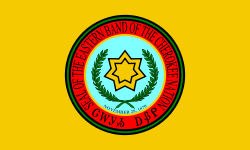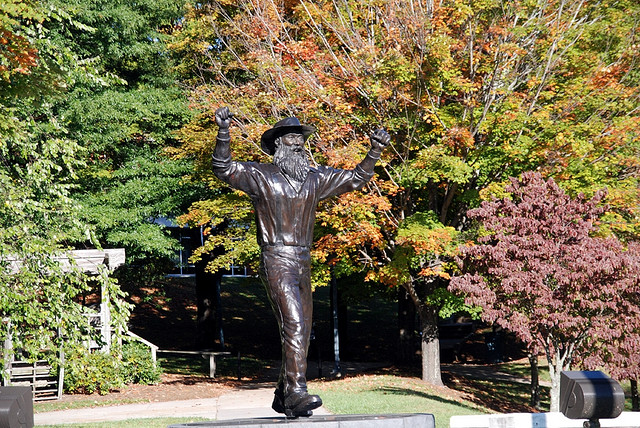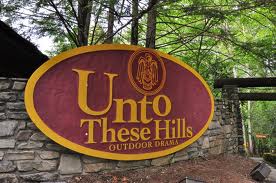Around the Great Smoky Mountain area there are numerous state parks that offer hours of recreational activities and educational opportunities. Whether the state parks are dedicated to a natural wonder in the park itself or attached to a historic event that took place, the state parks on both sides of the Smokies are remarkable.
Tennessee State Parks
 From Roan Mountain at the top of one of the highest points in Tennessee to the birthplace of Davy Crockett, the Tennessee state parks cover lots of history and lots of territory, from the northern part of east Tennessee to the area near Chattanooga. The parks also range in size and activities that are offered – camping, historical monuments, hiking, swimming, fishing and much more.
From Roan Mountain at the top of one of the highest points in Tennessee to the birthplace of Davy Crockett, the Tennessee state parks cover lots of history and lots of territory, from the northern part of east Tennessee to the area near Chattanooga. The parks also range in size and activities that are offered – camping, historical monuments, hiking, swimming, fishing and much more.
- Davy Crockett Birthplace
- Fort Loudon State Park
- Indian Mountain State Park
- Panther Creek State Park
- Roan Mountain State Park
- Sycamore Shoals State Park
- Warriors’ Path State Park
North Carolina State Parks
 Celebrating both the wonders of nature and historic people from Western North Carolina, the state parks on the eastern side of the Smokies are spectacular. New River State Park celebrates the New River area which was labeled as one of the National Scenic Rivers during the country’s bicentennial. Great mountain scenery and plenty of wildlife make this a gorgeous park. Mount Mitchell celebrates something else all together. Mount Mitchell, at 6,684 feet is the tallest point east of the Mississippi River. Majestic and beautiful this is the best way to enjoy the wonder that is Mount Mitchell.
Celebrating both the wonders of nature and historic people from Western North Carolina, the state parks on the eastern side of the Smokies are spectacular. New River State Park celebrates the New River area which was labeled as one of the National Scenic Rivers during the country’s bicentennial. Great mountain scenery and plenty of wildlife make this a gorgeous park. Mount Mitchell celebrates something else all together. Mount Mitchell, at 6,684 feet is the tallest point east of the Mississippi River. Majestic and beautiful this is the best way to enjoy the wonder that is Mount Mitchell.
- New River State Park
- Mount Jefferson Park
- Elk Knob State Park
- Mount Mitchell State Park
- Blue Valley Experimental Forest State Park
Spend some time at one of the state parks, either in North Carolina or Tennessee. Learn more about the area you are visiting, appreciate the natural resources that the government has set aside and protected for future generations and of course enjoy the activities and services that are added by these state parks.
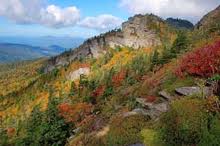
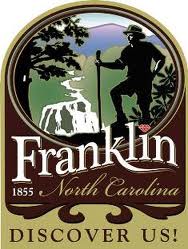
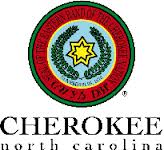
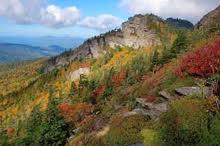
 Grandfather Mountain operated as a nature preserve and tourist attraction until 2008. Known for its mile-high swinging bridge, the bridge links the mountain’s two rocky peaks.
Grandfather Mountain operated as a nature preserve and tourist attraction until 2008. Known for its mile-high swinging bridge, the bridge links the mountain’s two rocky peaks. Grandfather Mountain rises 5,946 feet above sea level, and due to the considerable elevation gain the mountain boasts 16 distinct ecological communities. The mountain is famous for its rugged character, and is home to many hidden caves and significant cliffs.
Grandfather Mountain rises 5,946 feet above sea level, and due to the considerable elevation gain the mountain boasts 16 distinct ecological communities. The mountain is famous for its rugged character, and is home to many hidden caves and significant cliffs.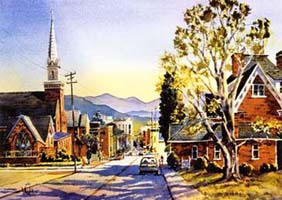
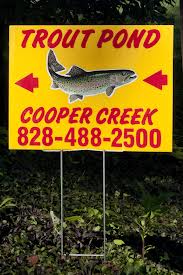
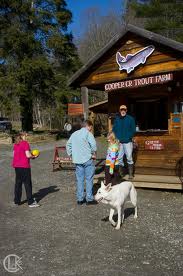 At Cooper Creek you keep whatever you catch. Once they’re caught, the fish don’t get thrown back in for someone else to catch, it’s yours. Cooper Creek staff will also clean the fish for you. Or they’ll show you how if you plan on trying it out for yourself. It’s a very clean operation, from the fish all the way down to the streams they live in. Just make sure that you give yourself enough time to hang out for the whole day, especially if you’re bringing a family or large group to the creek. It’s going to be a lot of fun that you don’t want to miss and won’t forget any time soon.
At Cooper Creek you keep whatever you catch. Once they’re caught, the fish don’t get thrown back in for someone else to catch, it’s yours. Cooper Creek staff will also clean the fish for you. Or they’ll show you how if you plan on trying it out for yourself. It’s a very clean operation, from the fish all the way down to the streams they live in. Just make sure that you give yourself enough time to hang out for the whole day, especially if you’re bringing a family or large group to the creek. It’s going to be a lot of fun that you don’t want to miss and won’t forget any time soon.